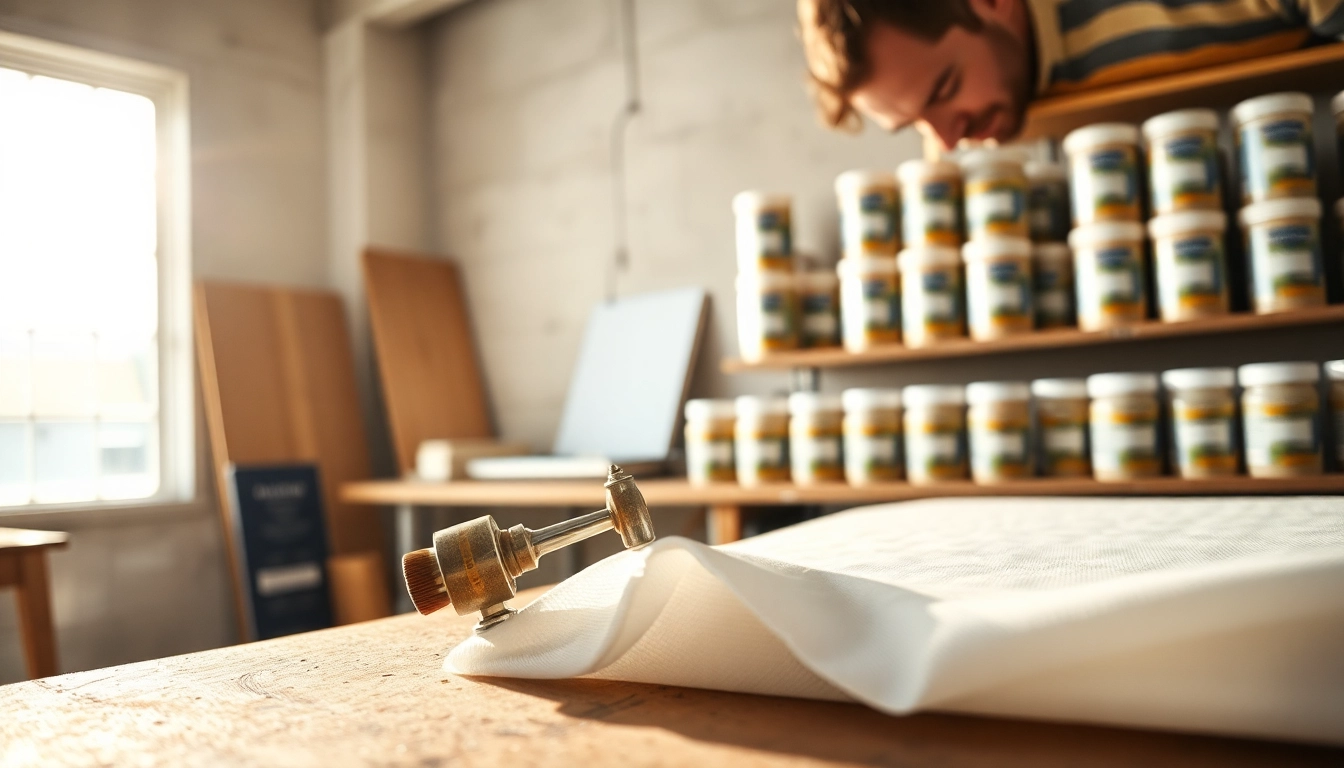Understanding Laminating Resin: Basics and Applications
What is Laminating Resin?
Laminating resin is a type of thermosetting resin used primarily in composite construction, where it is employed to bond layers of materials together. This resin is instrumental in various applications, as it provides strength, durability, and rigidity to composite structures. By utilizing laminating resin, manufacturers and hobbyists can achieve low weight-to-strength ratios, making it ideal for marine, automotive, and aerospace industries.
Common Uses of Laminating Resin
Laminating resin finds extensive application across numerous industries, including:
- Marine Construction: It’s prominently used in boat manufacturing and repairs, where it bonds fiberglass layers to create a sturdy, watertight hull.
- Automotive Components: In automobiles, it is employed to manufacture lightweight panels that contribute to fuel efficiency while maintaining safety standards.
- Sports Equipment: Laminating resin is frequently found in the production of lightweight equipment like bicycles and surfboards.
- Aerospace Applications: Its high strength-to-weight ratio is leveraged in aircraft structures, an industry that demands uncompromised performance.
- Art and Crafting: Many artisans use laminating resin to create stunning artworks, including jewelry, table tops, and decorations.
Benefits of Using Laminating Resin
Using laminating resin offers various advantages, including:
- Adhesion: It provides excellent bonding capabilities, ensuring that layers remain secured under various conditions.
- Flexibility in Application: The resin can be manipulated to fit diverse forms, making it versatile for complex shapes and items.
- Durability: Once cured, laminating resin offers long-lasting strength, resistance to chemicals, and minimal shrinkage.
- Weight Efficiency: Compared to traditional materials, laminating resin delivers robust performance while being significantly lighter.
- Customization: It can be easily tinted or mixed with additives to achieve specific physical properties.
Types of Laminating Resin: Polyester vs. Epoxy
Characteristics of Polyester Laminating Resin
Polyester laminating resin is one of the most widely used types in composite applications. Its primary characteristics include:
- Cost-Effectiveness: Polyester resin is typically more affordable than epoxy alternatives, making it appealing for large-scale projects.
- Fast Curing: It cures relatively quickly, allowing for rapid manufacturing and assembly processes.
- Ease of Use: Working with polyester laminating resin is generally straightforward, suitable for both professionals and amateurs.
Advantages of Epoxy Laminating Resin
Epoxy laminating resin is known for its superior performance and offers several distinct advantages:
- Superior Bonding Strength: It forms a stronger bond than polyester, enhancing the integrity of the structure.
- Enhanced Flexibility: Epoxy can withstand flexing, making it ideal for applications where movement may occur.
- Lower Shrinkage: When cured, epoxy experience minimal shrinkage, leading to better dimensional stability.
- Chemical Resistance: Epoxy laminating resin can better withstand harsh environments and chemicals, increasing longevity.
Choosing the Right Laminating Resin for Your Project
When deciding between polyester and epoxy laminating resins, consider the following:
- Project Scale: For large productions where budget is a concern, polyester may be more suitable.
- Performance Requirements: For structures requiring utmost durability and strength, epoxy would typically be the better choice.
- Working Environment: Consider the environmental aspects during application; some resins perform better in certain conditions.
- Desired Finish: If aesthetics are essential, epoxy often provides a clearer, glossier finish compared to polyester.
How to Properly Use Laminating Resin
Preparation and Safety Guidelines
Before using laminating resin, adhering to preparation and safety protocols is essential:
- Workspace: Ensure you work in a well-ventilated area to prevent inhalation of fumes.
- Personal Protective Equipment (PPE): Wear appropriate PPE, including gloves, goggles, and protective clothing, to safeguard against skin contact and irritation.
- Surface Preparation: Clean and prepare the surfaces to which the resin will be applied, ensuring they are free of dust, grease, and contaminants.
Mixing and Application Techniques
To achieve the best results with laminating resin, proper mixing and application techniques are vital:
- Mixing Ratios: Follow the manufacturer’s instructions on resin and hardener ratios for optimal performance.
- Mixing Process: Combine the components in a clean container and stir thoroughly to ensure uniform consistency and avoid air bubbles.
- Application Methods: You can apply laminating resin using brushes, rollers, or spray equipment, depending on the project needs.
Troubleshooting Common Issues with Laminating Resin
Knowledge of potential issues can significantly enhance the finished results:
- Sticky Surface: If the surface remains tacky after curing, it may indicate insufficient curing time or incorrect mixing ratios.
- Bubble Formation: Bubbles can occur due to rapid application; consider using a roller or brush to minimize air entrapment.
- Uneven Finish: An uneven finish can stem from inconsistent application; strive to apply the resin in even, controlled strokes.
Advanced Techniques for Laminating Resin Projects
Layering Techniques for Strength
To maximize the structural strength of your projects, consider implementing advanced layering techniques:
- Cross-Lamination: Staggering layers in opposite directions can enhance strength and stiffness.
- Thickness Variation: Utilizing multiple thicknesses can help tailor flexural properties to meet specific needs.
- Continuous Monitoring: Monitor overlap areas to ensure full saturation and bond strength during application.
Incorporating Additives for Enhanced Performance
Enhance the performance characteristics of your laminating resin by utilizing additives:
- Fillers: Incorporating fillers like microballoons can reduce weight while improving insulation properties.
- Colorants: Color additives can achieve aesthetic goals without compromising resin performance.
- Accelerators: For faster curing times, specific accelerators can be added based on project demands.
Finishing Techniques for a Professional Look
Achieving a professional finish with laminating resin involves several meticulous finishing techniques:
- Sanding: Once cured, sand the surface using progressively finer grits to eliminate imperfections.
- Polishing: Use polishing compounds to enhance the gloss and clarity of the finished piece.
- Coating: Consider applying additional clear coats for extra protection and an added shine.
Evaluating the Performance of Laminating Resin
Testing and Quality Assurance
Performance evaluation is crucial for ensuring your laminating resin projects meet quality standards:
- Mechanical Testing: Conduct tests to measure tensile strength, shear strength, and impact resistance.
- Adhesion Tests: Evaluate the bond between layers using peel tests and similar methodologies.
- Visual Inspection: Regularly inspect for surface defects, bubbles, and inconsistencies during and after application.
Long-Term Care and Maintenance
Maintaining the integrity of laminating resin projects involves consistent care:
- Cleaning: Regularly clean surfaces with mild soap and water to prevent buildup of dirt or grime.
- Repairs: Address minor damages promptly with appropriate resin application techniques.
- Environmental Protection: Shield from extreme UV exposure or harsh chemicals to prolong the life of the resin.
Evaluating Cost-Effectiveness of Laminating Resin Projects
Finally, assess the cost-effectiveness of using laminating resin in your projects:
- Initial Investment: Compare initial material costs of laminating resin against potential savings in other areas (e.g., labor).
- Longevity: Consider the lifespan of projects to determine value—higher upfront costs may yield better long-term results.
- Scalability: For larger projects, evaluate how material performance and project efficiency enhance overall profitability.



